Besides Surfing
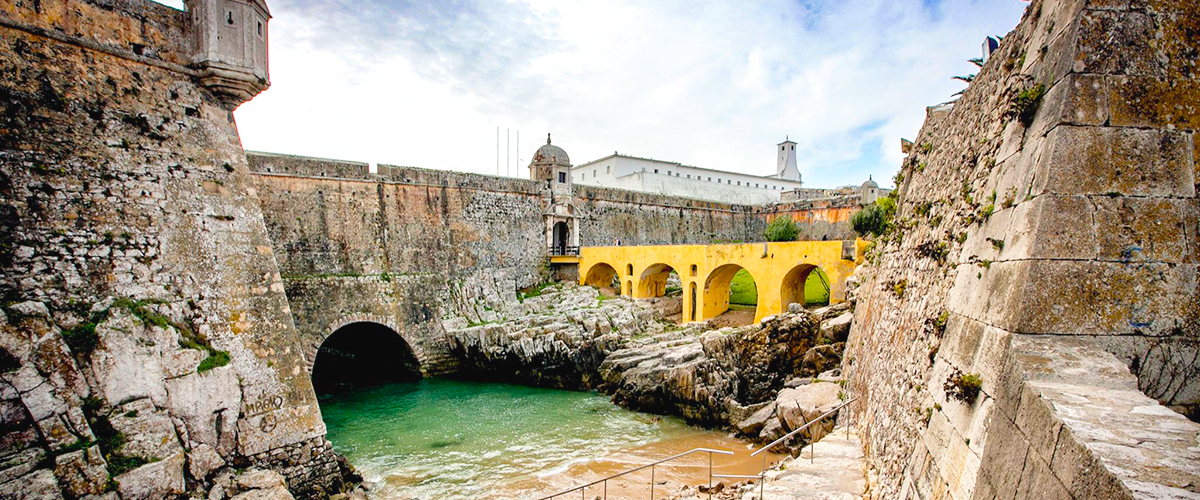
Peniche & Baleal
Peniche and Baleal are way more than just surfing, and they offer plenty of other fun stuff to do!
Here you can simply lie on one of the many beaches, soaking up the sun, walk by the coast, listening to the waves and breathing pure ocean air, do fishing and underwater hunting, bike, skate, or even play golf. Moreover, the golf fields of Praia d’el Rei, ones of the best in Europe, are literally 10 minutes away.
All the beaches are very clean and have lifeguard supervised sea swimming area. Being a seaside city and one of the largest fishing ports of Portugal, Peniche is famous for its fish and seafood served straight from the sea to the tables of local restaurants. The 16th-century fortress that was used as one of dictator Salazar’s infamous jails for political prisoners is one of the remarkable sites of Peniche.
You can also admire the real power of the ocean at the Cabo Carvoeiro cape, which is the second westernmost point of the European continent. This picturesque place features various weird sculptures carved in the rocks by the seawater like, for example, Nau dos Corvos, a huge rock which resembles a big submerged ship. There is a large number of coffee shops and bars in Peniche and Baleal that are open all year round so you’ll never be bored.
Check out our list of the restaurants we recommend visiting:
• O Pedro
• Miramar
• Prainha
• Tribeca
Peniche is perfectly located not far from many interesting places worth visiting while in Portugal. This country with its rich cultural heritage and amazing nature is going to blow you away.
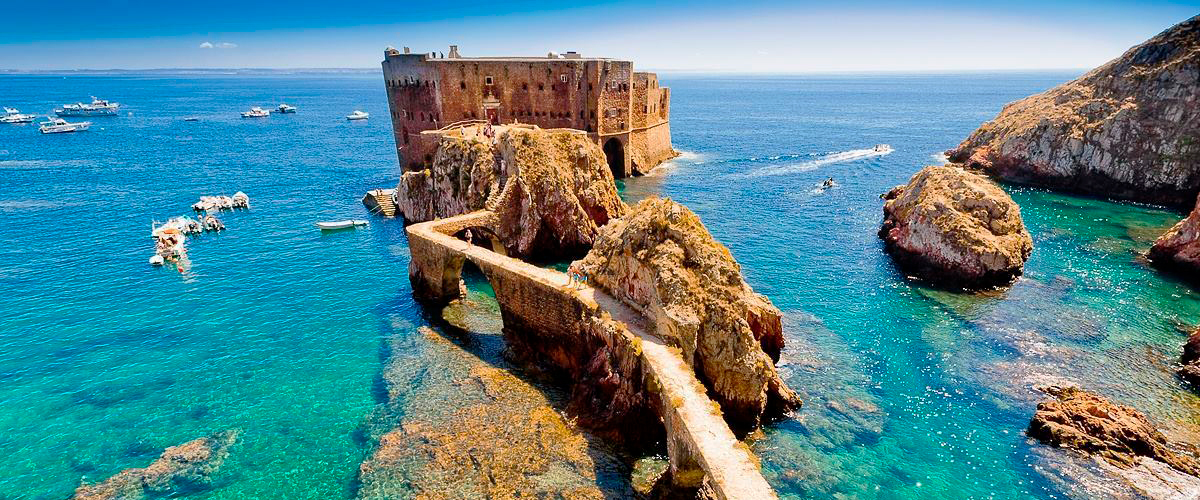
Berlengas Islands
Berlengas is a little archipelago located opposite Peniche, 10 km away from the coast. The natural surroundings have remained perfectly preserved on its islands.
The largest island is an island of Berlenga. It is a natural reserve and a unique ecosystem, hence a wide variety of fish, birds, animals and plants can be found there. The island is criss-crossed by the myriad of magnificent pink granite grottos under which you can ride in a boat marvelling at clear azure waters. And that’s where, on the small rocky island, you can also find a 17th century fort.
Clear waters are a great pleasure for dive enthusiasts as they allow to get a good look at underwater life and sunken vessels. For those wishing to visit Berlengas, small tourist ships leave daily from the port of Peniche from May to October. Anyway, it is possible to book a boat trip to the islands in the remaining months of the year provided that the ocean is calm.
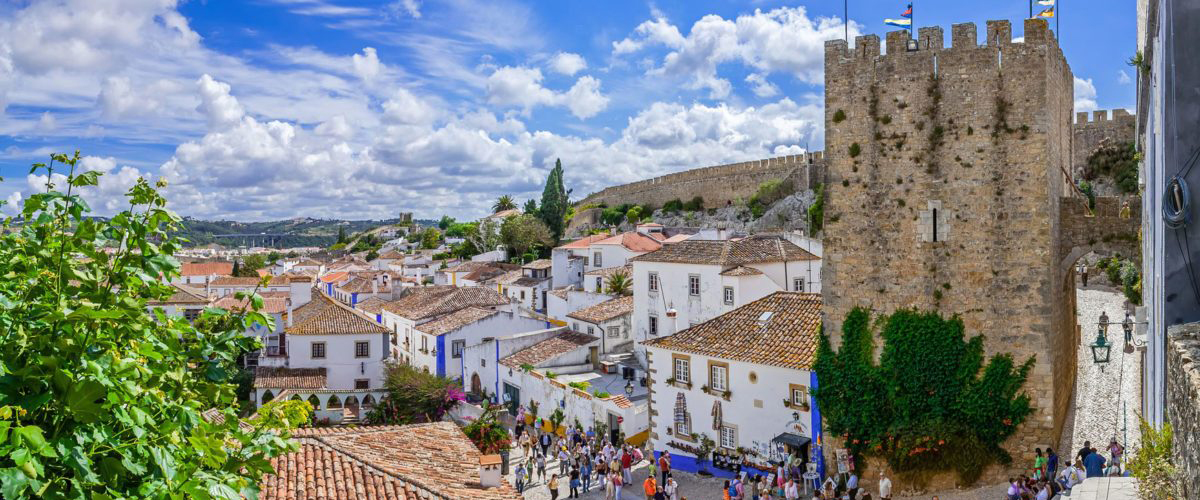
Óbidos
This fairy-tale village 20 minutes away from Peniche is one of the most picturesque and visited corners of Portugal. Its historical centre and the castle surrounded by a high medieval wall are the national heritage of Portugal.
Óbidos was won back from the Arabic conquerors by the first king of Portugal in the early 12th century. The Arabic castle was subsequently reconstructed. More than that, Óbidos and the lands around it were traditionally offered by the kings to their brides for generations.
It’s even possible to get up on the castle wall, walk around and admire a spectacular view of the peaceful and green surroundings.
Moreover, every year in May the International chocolate festival is being held in Óbidos: the streets turn into the real showcase of cakes and candies. Also you can visit the contest for the chocolate sculptures which are the real works of art.
The lagoon of Óbidos (Lagoa de Óbidos) – the remains of the vast and deep gulf - is located nearby. There, the ocean extends far into the land, forming small lakes with warm salty water. It is a great place to do sailing, windsurfing, kitesurfing, canoeing. More than that, you can enjoy a stunning view of the miniature peninsula of Baleal.
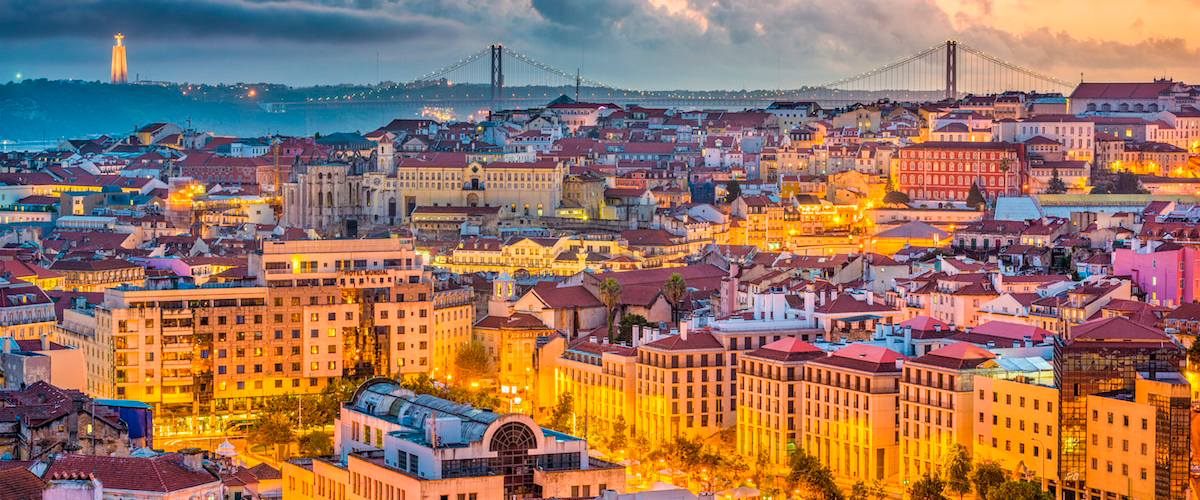
Lisboa
Lisbon, the capital and the largest city of Portugal, is 90 kilometers away from Peniche, and it can be easily reached by bus (find the bus schedule here).
Lisbon, together with Athens and Rome, is one of the most ancient capitals of the European Union.
Sunny Lisbon lies along the river Tagus (Tejo) which completes its long journey to the ocean over there. It is one of the few European capitals, situated by the river and by the ocean at the same time. Hence, its special importance as a starting point for the voyages of discovery, especially increased during the Age of Discovery. For a long time Lisbon was the capital of the Portuguese Empire, which extended from Brazil to India.
Also, this city is unusual in that it lies on the seven hills, and some streets go up and down almost vertically. The enchanting view over the city that opens from any one of its many observation points – miradouros – is absolutely breathtaking. On top of that, to make it more comfortable to get around you can use lifts on the steep hills.
Castle of Saint George (Castelo de São Jorge) is one of the city attractions you might be interested in seeing. It was won back from the Arabic conquerors in 1147 by the first king of Portugal. Also, you might want to see the splendid monuments of purely portuguese architectural style “manuelino” represented by the Hieronymites Monastery (Mosteiro dos Jerónimos) and the Belém Tower (Torre de Belém) which remind us of the Age of Discovery. By the way, in the historic Belém district you should definitely try the famous egg tart pastry “pastéis de Belém”.
We absolutely recommend to wander along the winding medieval streets of the Alfama district. During the day they will bring you to their Arabic origins, and at night they will enchant you with the beautiful voices of fado singers.
You can also take a ride on the tram №28 to see the whole old quarter of the fascinating city of Lisbon. Note the traditional panels of ceramic blue-and-white tiles “azulejo” that cover the facades and balconies of many buildings. Unfortunately, many of the significant architectural monuments had been destroyed by the 1755 earthquake.
There's yet another really beautiful new district in Lisbon known as the Park of the Nations (Parque das Nações). It was created along the river Tagus for the 1998 World Expo together with the Vasco da Gama bridge (the longest in Europe, 17km) and one of the largest oceanariums in the world. It is a beloved place of leisure of capital citizens and guests.
If you love shopping head straight to the main commercial street of the city Rua Augusta. In addition, Avenida da Liberdade, the broad avenue in the heart of the city, has some of the world’s finest boutiques and shops. 20 minutes away from Parque das Nacões, on the other side of the Tagus river, there is a large outlet mall “Freeport”.
Moreover, Lisbon is one of the European capitals that is famous for its vivid nightlife. There is no shortage of restaurants with delicious food, bars and discos. You can spend a relaxing evening in a cosy and emotional setting of one of traditional Fado Houses in Bairro Alto and Alfama quarters. Or you may choose to cheer all night long at the discos at the waterfront. Avenida 24 de Julho is one of the most vibrant streets of the night city. You can have a good time in the numerous bars on the narrow streets of the old Bairro Alto district.
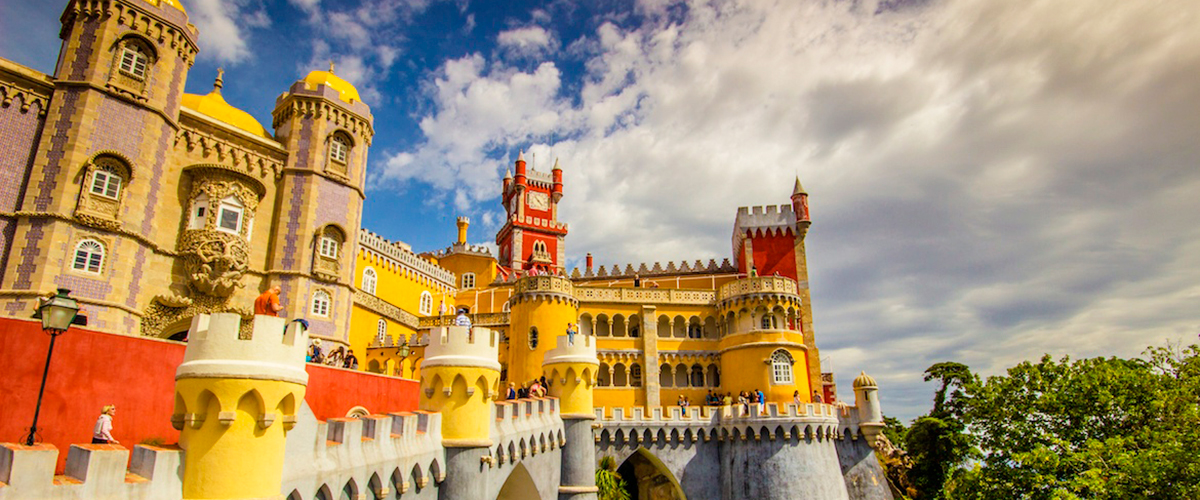
Sintra
Romantic Sintra, 20 km away from Lisbon, is included in UNESCO's list of the world's cultural heritage, thanks to the combination of rich nature and unique architecture.
Sintra is a pride for the entire nation! Its narrow streets running along the slopes, houses and mansions lining them, green hills covered with parks and gardens, - it amazes with the beauty and leaves an indelible impression.
Visit the national palace (Palácio Nacional de Sintra) dating from late 14 century, that had long served as the summer residence of Portuguese kings. Especially the Arabic Hall is distinguished by its majesty being the legacy of the king Manuel the First, who was a true admirer of Mauritanian art. Have a walk around the age-old gardens and grottos of the magnificent manor Quinta da Regaleira, which only adds to the mystery and magic of the town.
The Pena Palace (Palácio Nacional da Pena) is an over-the-top fantasy palace crowning the Sintra mountain. It is the greatest expression of 19th-century romanticism in Portugal and the beautiful combination of Manueline and Moorish architectural styles. Up there not only can you enjoy the stunning view over the sea and the mountains but also capture the true essence of Sintra.
Don’t forget to visit the romantic Monserrate Palace (Palácio de Monserrate) with its luxurious reception rooms, such as the Indian living-room, the dining-room and the library. In addition, its surrounding park is an extraordinary botanical reserve that amazes with its beauty and contrasting landscapes. Walking around you have an opportunity to encounter flora and fauna from all over the world, from Australia to Mexico and Japan.
And also you ought to visit Roca Cape (Cabo da Roca), the westernmost point of the European continent (which is the main reason for visiting it). The Serra de Sintra here abruptly meets the Atlantic Ocean in a cliff of more than 100 m high, and that’s where you’ll understand why it is considered to be 'the end of the world'.
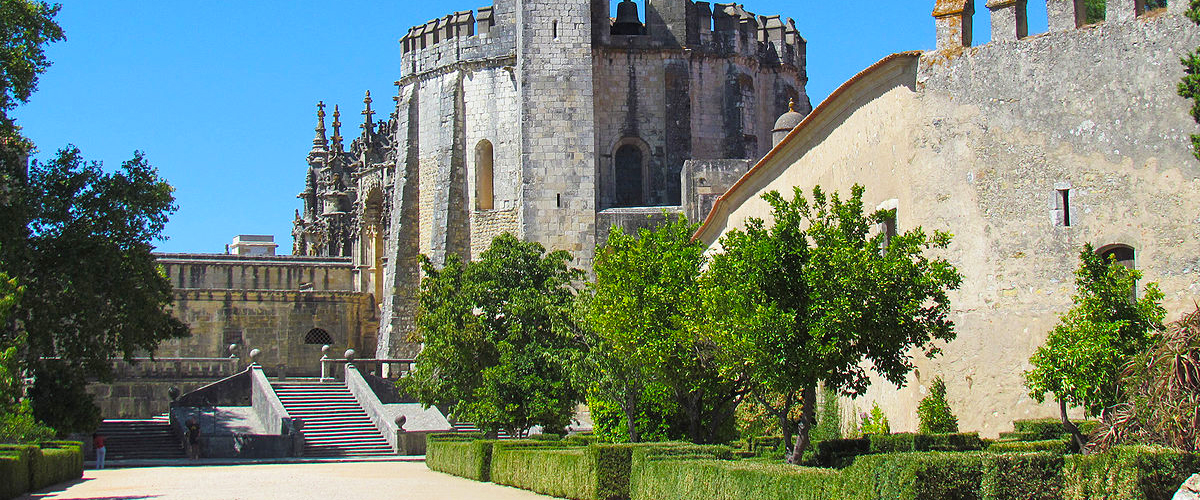
Tomar
The town of Tomar is considered a cradle of the Order of the Knights Templar in Portugal. And the Convent of Christ (Convento de Cristo) is a UNESCO World Heritage Site that covers around 45 hectares and may well be one of the best things you see on a visit to Portugal.
Visit the castle, built by the Order of Knights Templar in 1160, which turned Tomar into the bastion for defense and expansion of the lands, retaken from the Arabs. the magnificent castle once had been the seat of the Order of the Temple.
Undoubtedly, the church of the Convent of Christ itself is worth your attention. The Romanesque round church is a Roman Catholic Church from the castle was also built in the second half of the 12th century by the Knights Templar.
When the order was dissolved in the 14th century the Portuguese branch was turned into the Knights of the Order of Christ, that later supported Portugal's maritime discoveries of the 15th century. Hence the name of the convent. It still bears the mysterious spirit of those times.
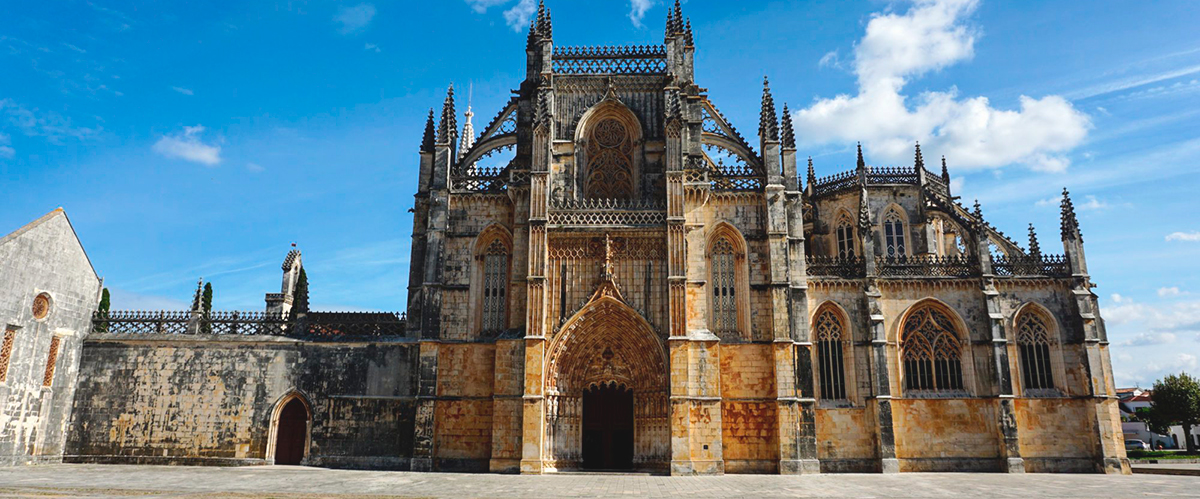
Batalha
The Monastery of Batalha is a jewel of European Gothic architecture of the end of the Middle Ages.
This masterwork of late Gothic took over a century to build and required an enormous effort, using extraordinary resources of men and material. From the beginning the Monastery stood as an affirmation of Portuguese independence against the powerful Kingdom of Castille and became a symbol of greatness of the (Portuguese) monarchy. The Batalha convent was added in 1983 by UNESCO to its list of World Heritage sites.
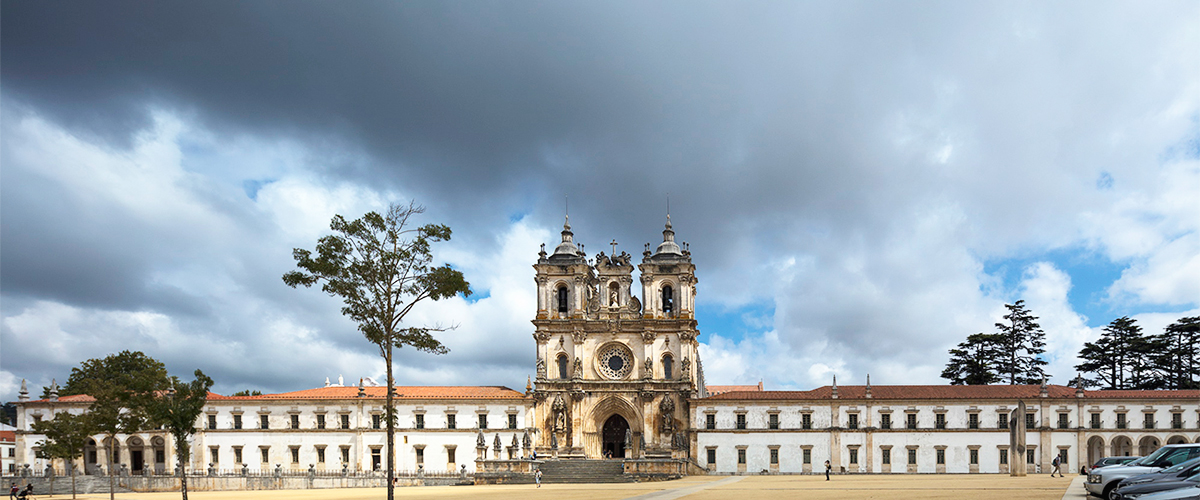
Alcobaça
The Royal Abbey of Santa Maria de Alcobaça is a masterpiece of Cistercian Gothic art and is classified as a World Heritage Site by UNESCO. The monastery was founded by the first Portuguese King, Afonso Henriques, in 1153, and it’s still the country’s largest gothic church.
The tombs of the famous Portuguese Romeo and Juliet, King Pedro I and his mistress Ines de Castro, are located here. Moreover, they are located in separate transepts so that on the day of Resurrection the lovers could look into each other's eyes. Many bards all over the world praised overwhelming love of Pedro and Ines. After the death of his wife Constance, Pedro tried to make Ines his lawful queen — they already had three children together — but his father, the king Afonso IV, intervened and had her murdered.
The moment Pedro took over the power he ordered Ines’ body to be disinterred, her corpse dressed in finery and propped up in the throne room. Then he ordered his vassals to pledge their obedience and loyalty to this corpse and further demanded that they kiss the decaying hand of his beloved. Pedro had built a magnificent tomb for his beloved Inês in the monastery of Alcobaça, and a matching tomb for himself. The lovers face one another, their tombs inscribed with the phrase “Até o fim do mundo…” or “Until the end of the world…”

Mafra
The Palace of Mafra (Palácio Nacional e Convento de Mafra) was built in the 18 century and it is among the most remarkable Baroque buildings in Portugal. In 2007 it was also one of the finalists of the Seven Wonders of Portugal.
The palace was a popular destination for the members of the royal family who enjoyed hunting in the nearby game preserve. The building also includes a major library, with about 40,000 rare leather-bound books with gilding (14-19 centuries), that is unique in the country.
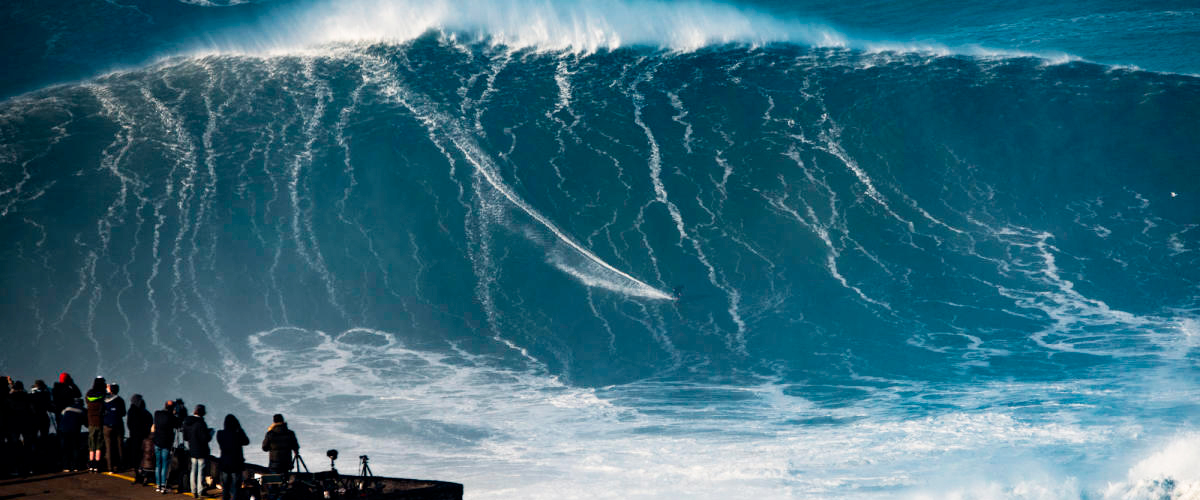
Nazaré
A small fishing village Nazaré became world-famous in 2011 when the Hawaiian surfer Garrett McNamara took a 78-foot monster wave at the Praia Norte beach and entered the Guinness World Records. Only in November 2017 the Record was broken by Brazilian surfer Rodrigo Koxa who caught an 80-foot tall wave. Germanys Sebastian Steudtner says he has surfed the 'unsurfable' after drone technology measures 93.7-foot wave as world record. Steudtner surfs the 86-foot wave this current February 2024.
Nazaré is a unique place. Thanks to a so-called Nazaré Canyon, a unique topographical feature that is 1,000 feet deep, three miles wide and 105 miles long, giant waves are generated here. Nazaré is a Mecca for surfers who are pursuing big waves. Usually when the swell is above 2 meters in the forecast, the period is above 13 seconds and the wind is not very strong and offshore, Nazaré has good conditions for big waves!
However this is only one of the reasons to visit Nazaré. Miles of wide sandy beach line and an endless promenade are the calling card of the town. And the view that opens from the 318 meters high Sítio cape is one of the most famous panoramic views over a stunning portuguese coast.
Visiting Nazaré don’t forget to try traditional portuguese fish and seafood dishes at one of many restaurants on the promenade. Moreover, Nazaré is a great place to buy for memory some local handicrafts inspired by the ocean.
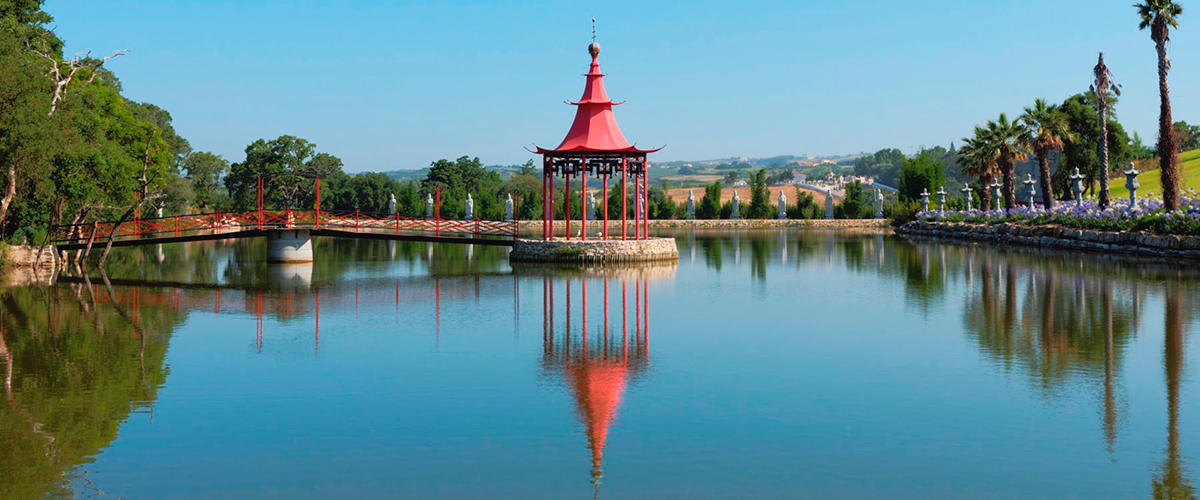
Buddha Eden Park (Jardim Buddha Eden)
Buddha Eden Park is the largest oriental garden in Europe, can be found. This fascinating park with around 35 hectares of land is 30 minutes by car from Peniche. It was created by one wealthy Portuguese after the tragic events of 2001 in Afghanistan, when the Taliban destroyed the giant Buddhas of Bamiyan, the unique cultural heritage of humanity.
The Buddha Eden Park is a kind of honor paid to those monuments erased forever from the face of the earth. The park is intended to be a place of humility, silence, harmony and meditation for all people regardless of nationality and religious beliefs.
The entrance fee is 4€ and you can visit the park from 9.00am to 6.00pm daily. It’s especially pleasant to visit the Buddha Eden Park from fall to spring, when it doesn’t get many visitors.

Porto
Welcome to Porto, a city renowned for its timeless charm and rich cultural heritage. Porto boasts a plethora of captivating sights and landmarks, each offering a unique glimpse into the city's vibrant tapestry. Begin your exploration at Ponte de Dom Luís I, an iconic bridge spanning the Douro River, offering breathtaking panoramic views of Porto's picturesque skyline. Next, marvel at the exquisite tile work of Sao Bento Railway Station, a testament to Portuguese craftsmanship. Follow the tranquil flow of the Douro River, either by strolling along its banks or embarking on a scenic boat trip, to experience a serene escape from the city's hustle and bustle. Lose yourself in the winding streets of Cais da Ribeira, adorned with traditional riverside architecture and bustling with lively cafes and boutiques.
Ascend the Torre dos Clérigos for sweeping views of Porto's skyline, and visit Porto Cathedral to immerse yourself in centuries of faith and tradition. Explore the historic Palacio da Bolsa and the architectural splendor of Igreja de São Francisco, both reflecting Porto's rich cultural heritage.
Experience the fervor of a football match at Estadio do Dragao, home to FC Porto, before marveling at the stunning blue tiles of Capela das Almas and the remarkable restoration work at the Church of Santa Clara.
Finally, indulge your senses at Mercado Bom Sucesso, where Porto's flavors and aromas come alive in a vibrant marketplace experience. Embark on a journey through Porto's sights and landmarks, each offering a window into the city's captivating culture and history. May your time in Porto be filled with unforgettable moments and cherished memories.